 Introduction
Introduction
The world of FP&A is changing rapidly. Basically, it becomes the high priority for global and local organisations because it paves the way for quicker and better decision making process. How different or similar FP&A trends in different countries?
In July 2017, I facilitated 5 meetings of the International FP&A Board in Asia and Australia. It was an amazing journey to 3 countries, 5 cities, and two continents. I was on the road for one month and met so many passionate FP&A professionals in Kuala Lumpur, Singapore, Perth, Melbourne and Sydney. Every meeting was a great success. Every meeting was so different: full of interesting stories, debates, questions, answers, case studies, and discoveries. FP&A trends are global, but each country and city tackle the challenges and create opportunities in its own manner. The demand for the first hand FP&A knowledge and experience is very high globally. It is no wonder, as our profession is undergoing an amazing transformation and demand for the FP&A talent and thought leadership is very high. In summer, The International FP&A Board added three strong Australian chapters to its portfolio. On the 19th of September 2017 we will be celebrating our fourth birthday with pride: now International FP&A Board is a collection of professional passion and experiences from 11 countries, 14 cities and four continents. This article describes our two Asian meetings: in Kuala Lumpur and Singapore.
FP&A Board meetings in Kuala Lumpur and Singapore in July 2017
Two Asian chapters of the International FP&A Board were launched in November 2016 in Kuala Lumpur and Singapore. It was exciting to see that the second meetings of those chapters were much in demand and I could observe the same passion and interest in Asian FP&A community as anywhere in the world.
Kuala Lumpur, Malaysia
KL is the major finance and business hub for Malaysia. Located at the heart of ASEAN, it offers a gateway to a regional market of over 600 million people and is considered to be the best among the emerging market economies in Southeast Asia in the ease of doing business. As Malaysia remains one of the low-cost alternatives in terms of running a business in the region it attracts many international companies. We observed a very strong and diverse professional finance community in Kuala Lumpur as the FP&A Board gathered senior representatives of local and international companies.
22 senior finance professionals from the leading organisations such as AmBank Group, Atalian Global Services, Genpact, Axiata, JLT Asia, Laureate Education, Maybank, Merck Sharp & Dohme, SC Johnson, Sime Darby, Tan Chong Group, YTL Hotels, etc., joined the FP&A Board meeting in Kuala Lumpur on 5 July 2017.
Singapore
Singapore is a small, but wealthy city-state with strong and very well-educated finance community. Singapore is a globally connected and cosmopolitan city with the excellent business environment and many leading organisations have their Asian head offices there.
And the FP&A Board meeting in Singapore on 11 July 2017 became one of the largest so far with 34 senior finance professionals attending and much more on the waiting list. We were glad to welcome the senior representatives of such companies as Adani, Barclays, Citi, CBRE, Diageo, Expedia, InterContinental Hotels Group, International SOS, Johnson & Johnson, Kimberly Clark, Korn Ferry, Lego, Lexmark, MSD, Nielsen, Philips, Richemont, Tiffany & Co, Sibelco, Stanley Black & Decker, etc.

I am happy to testify the formation of highly synergetic global FP&A community under the wings of the International FP&A Board ready to share their first-hand experiences in implementing the best practices in global FP&A, the challenges faced and met.
The Board members of the both chapters discussed the subject of FP&A Analytical Transformation: what it is, what the leading stage is and how to achieve it.
FP&A in Asia. How different is it?
Interestingly enough, the Asian finance communities identified the same global trends in FP&A as anywhere else in the world. From the new-world perspective as opposed to the traditional view the financial planning becomes on-demand and continuous rather than scheduled, models change to driver-based and dynamic. There is a strong tendency to simplify the details with wider use of integrated planning platforms that substitute Excel. The analytics is becoming more advanced and proactive with expanding time-horizon. The FP&A professionals take strategic roles of influencers instead of data consolidators.

The FP&A in Malaysia is an emerging discipline. Only international and mostly American organisations use FP&A titles and call their planning and forecasting departments “FP&A”. Many of the local organisations still have finance departments that embrace reporting, controlling, budgeting and planning functions.
Obviously, big international organisations have separate planning, budgeting and forecasting departments. FP&A is going by many names “planning and budgeting”, “business controlling”, “management accounting”, “commercial finance”, etc. in Malaysia.
On the contrary, in Singapore the term “FP&A” is well-known and very popular. Quoting one of the CFOs of a big international company, “many young professionals prefer to work in FP&A as it is more “sexy”. Singapore is a hub of finance innovation. This the city of a big and diverse financial community: both local and international. Many global organisations have their Asian representative offices there. The competition is strong, the educational background of the professionals is impressive. And I could see that with my own eyes when the second FP&A Board meeting almost turned into a forum with 34 FP&A professionals attending and many on the waiting list as we could not accommodate the full demand.
Overall, Asian Finance community shares the same passion for the changes in modern FP&A and understands very well that in the business environment of “unknown unknowns”, flexible, dynamic and analytical FP&A is a must.
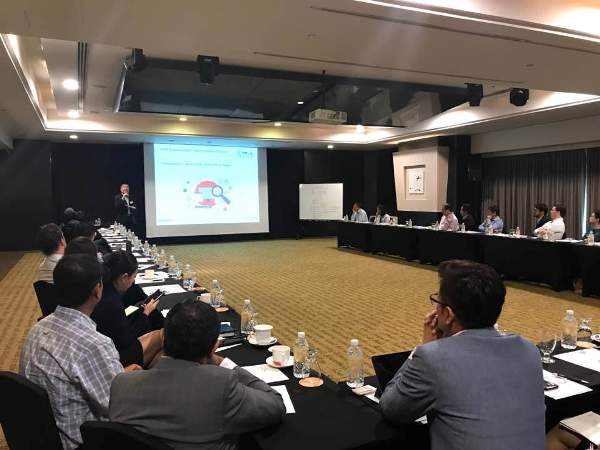
What is advanced analytics for FP&A?
Quoting Thomas H. Davenport, analytics thought leader, it is “extensive use of data, statistical and quantitative analysis, explanatory and predictive models and fact-based management to drive decisions and actions”.
FP&A Advanced analytics is forward looking. It is predictive and prescriptive. It generates insights and foresights and, very importantly, it allows for a quick and easy scenario planning. In the leading analytical organisations “What If?” question is asked frequently and in real time for the effective decision-making process.
The traditional planning models that are static and detailed are not fit for this purpose anymore. Simplification is the key word. How to quickly play forward looking scenarios? Only through driver-based models? How to identify key drivers in the sea of big data? How to find that 20 % of drivers that can generate 80% of the results?
There were many questions like these and many interesting ideas.
The FP&A Boards discussed the FP&A Analytics Maturity Model developed by the London FP&A Board. The model presents an overview of the three states (developing, intermediate and leading) and five stages (basic, developing, defined, advanced, leading) of the organisational analytical transformation.
The Board agreed with the description of the leading FP&A analytical stage:
- the integrated planning process;
- leading analytical matrixes (drivers);
- integrated driver based planning model and system connected with BI;
- real-time collaborative planning;
- easy multidimensional scenario analysis;
- advanced analytics.
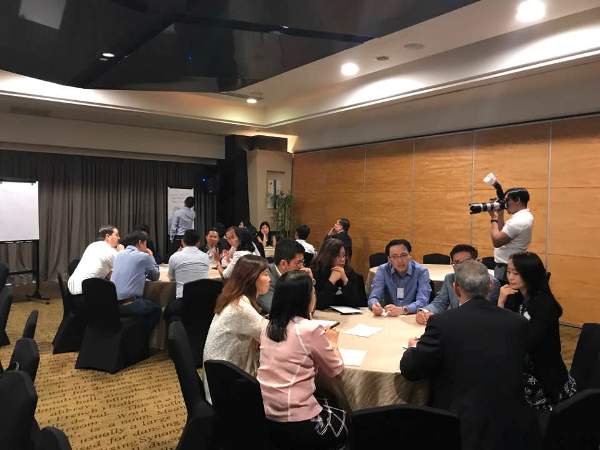
Also, the Board discussed their current analytical position. Many companies still have a lot of work to do in order to move to the leading stage of analytics. The biggest challenges that have to be taken are:
- data quality;
- developing the analytical culture within the organisations;
- investment into the analytical systems;
- finding and developing FP&A talents;
- finding and managing key analytical drivers for the planning models.
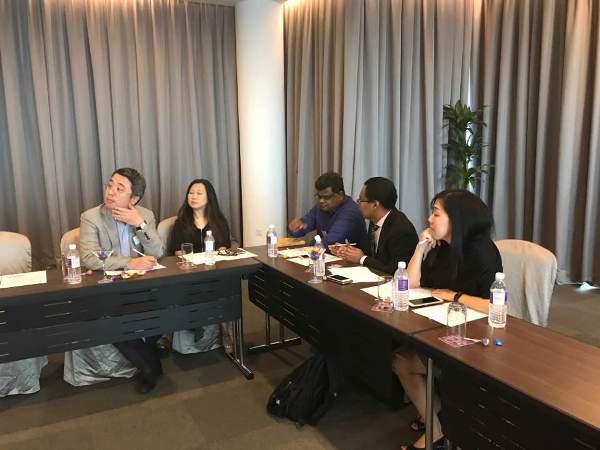
FP&A: Judgemental vs Analytical
The debate was also centred around this question: what element of “judgement” is healthy for FP&A?
It is not possible to have exclusively analytical and driver-based planning processes. There will always be an element of Judgement in it. But what sort of judgement and what is the “healthy percentage“ of judgement before it becomes biased?
The problem of traditional planning, budgeting and forecasting process is that it allows too much judgement. The judgement that is generated by traditional target setting and performance evaluation could be dysfunctional. Everybody agreed that the analytical approaches should prevail in modern FP&A. They should and can drive cultural change in organisations and can help move away from the toxic and political traditional budgeting process.
Analytical Transformation Ecosystem
Analytical Transformation is not possible without transforming people, processes and systems. That is why these areas and the ways to transform them became the focus of the small group work.
As always, that was one of the most anticipated parts of the meeting. The Board members enjoyed the opportunity to network with each other and share their views and experience.
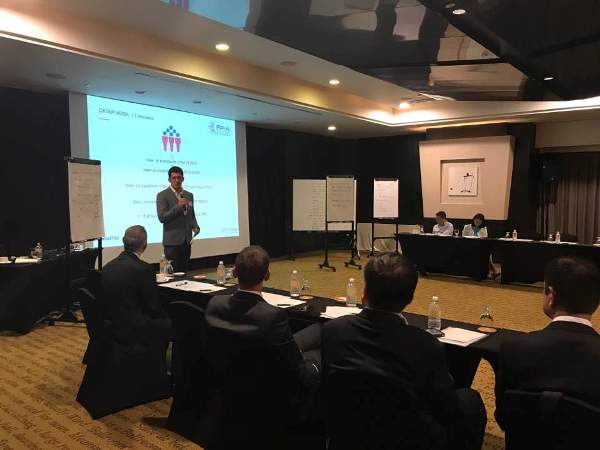
Case studies from the field
We were happy to have Abhinay Jhamb, FP&A Director at InterContinental Hotels Group, to share his insights on FP&A Analytical Transformation, as well as Daniel Tando, former CFO at Nielsen to give “FP&A Organisational Transformation at Nielsen” presentation at our meeting in Singapore.
We are also grateful to Dipesh Patel, Finance Director at G4S (Malaysia and Singapore), for sharing his company’s insights on latest trends in FP&A Analytical Transformation with the Board in Kuala Lumpur.
It was interesting to see how these companies take FP&A Transformation seriously and transform their people, processes, systems and culture in order to help their companies achieve advanced analytical stage.
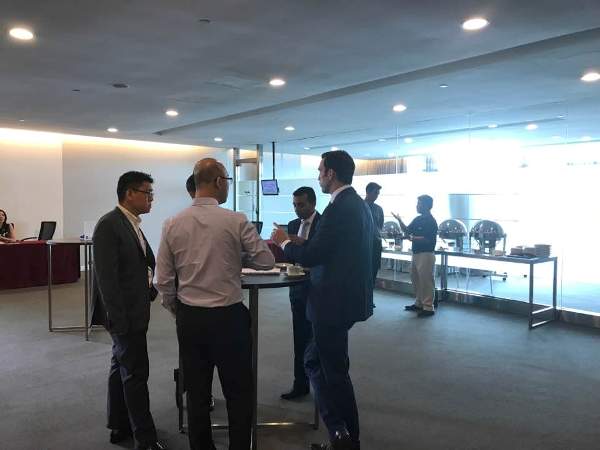
Conclusions
The conclusions of the two meetings were the following:
- FP&A Analytical Transformation is essential for the current business environment;
- The Analytical transformation is going slowly due to lack of investments, legacy systems, the business culture, etc.;
- In order to achieve the leading stage, we need not only implement digital technologies but change the culture, adjust processes, invest into people.
About International FP&A Board
The London FP&A Board was created on 19th September 2013 to guide the development and promotion of best practices in financial planning and analysis (FP&A). By the end of 2017, individual board chapters will have been established in 15 cities in Europe, the Middle East, Asia, the USA and Australia in order to identify and support new global trends, skillsets, and thought leadership in FP&A.
Our Sponsors
We are very grateful to our sponsors and partners Michael Page, one of the world's leading professional recruitment consultancies, and Prevero, a leading Corporate Performance Management (CPM) provider, for supporting the second meetings of the FP&A Board in Kuala Lumpur and Singapore.
The next FP&A Board in Kuala Lumpur will gather on 28th November 2017 to discuss FP&A Business Partnering and in Singapore on 30th November 2017 to discuss Best Practices In Driver Based Planning. Stay in touch with our global FP&A community through the FP&A Club LinkedIn Group and the FP&A Trends resource. Please do not hesitate to join and to contribute to the discussions, posts, and commentaries.

